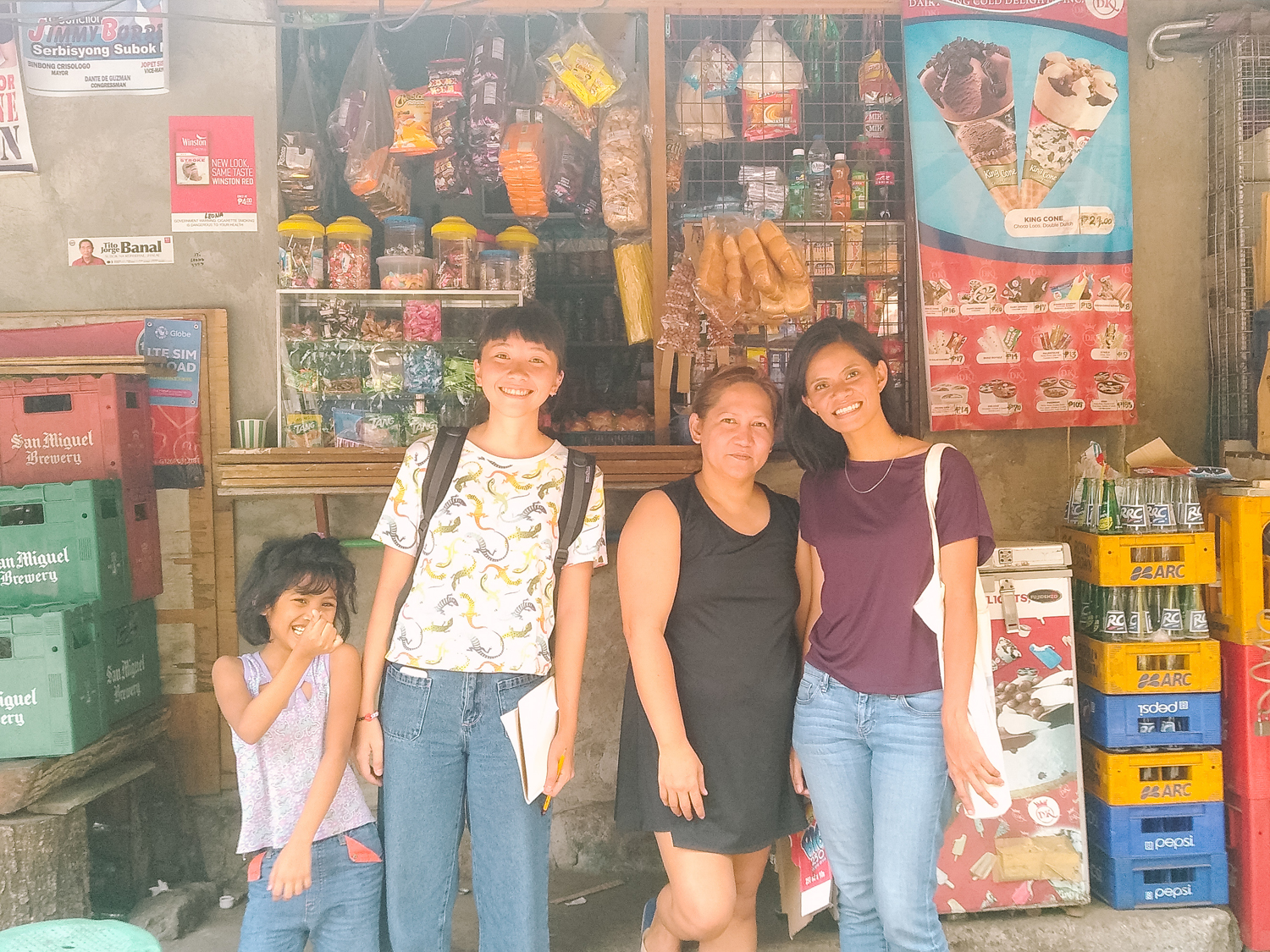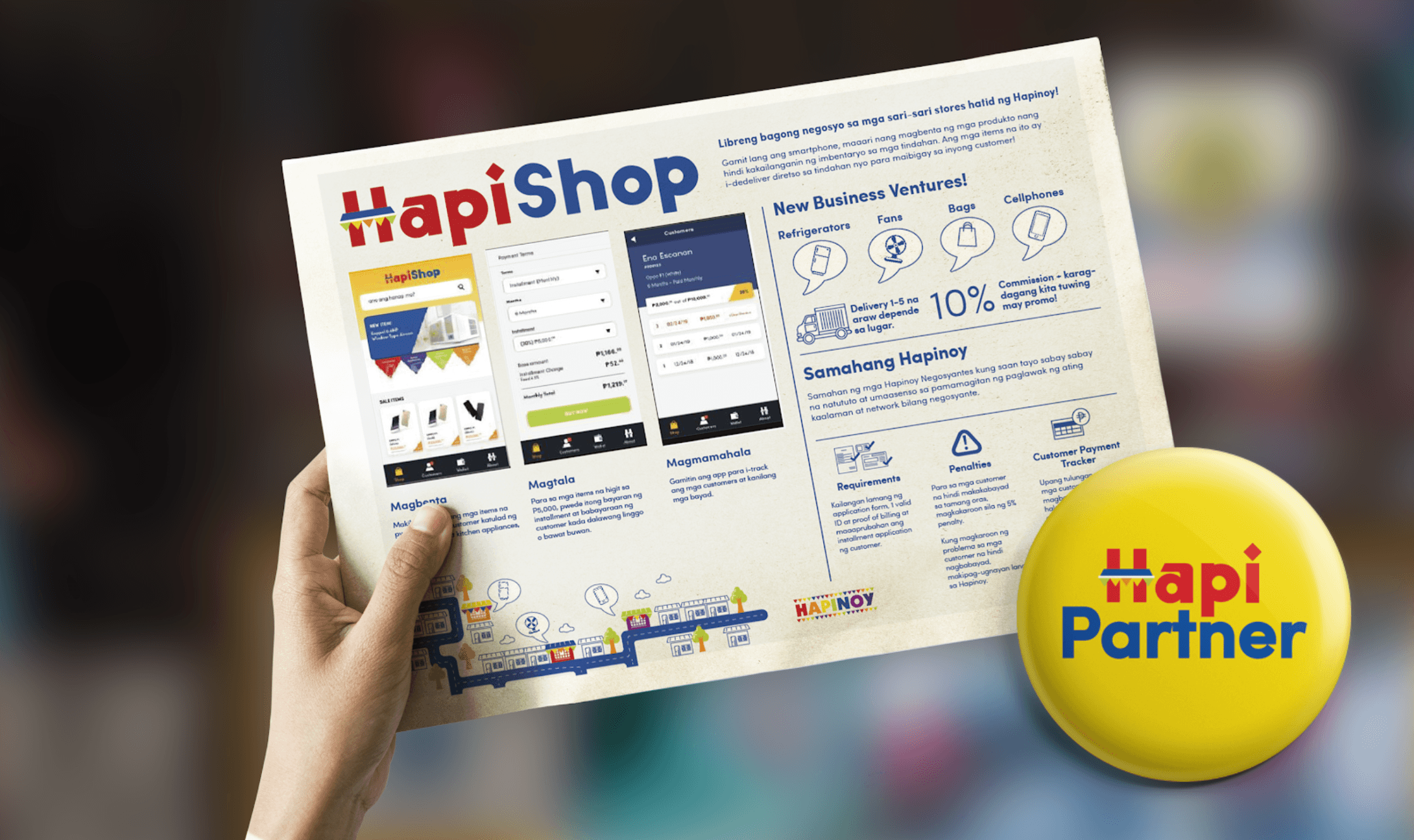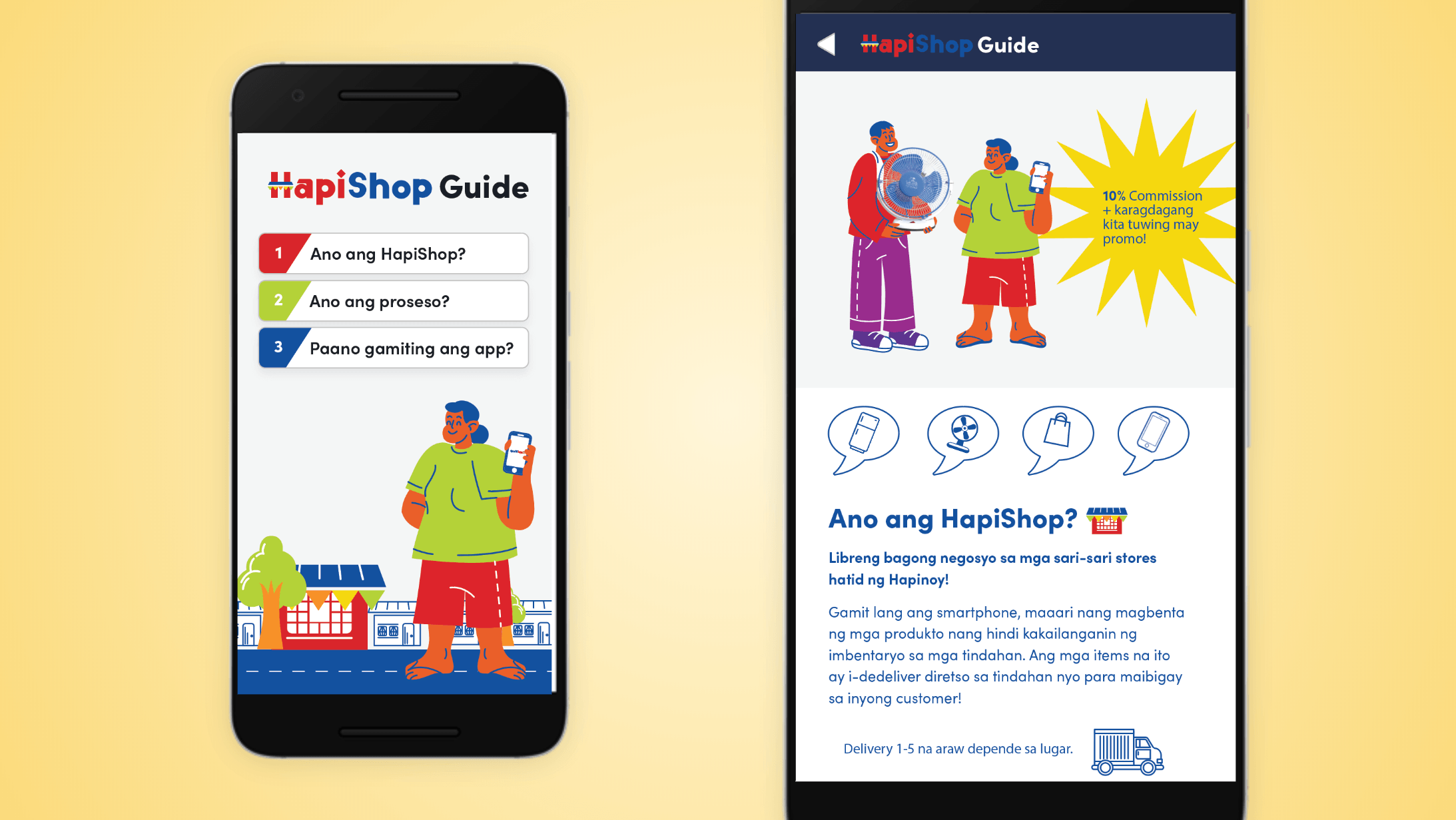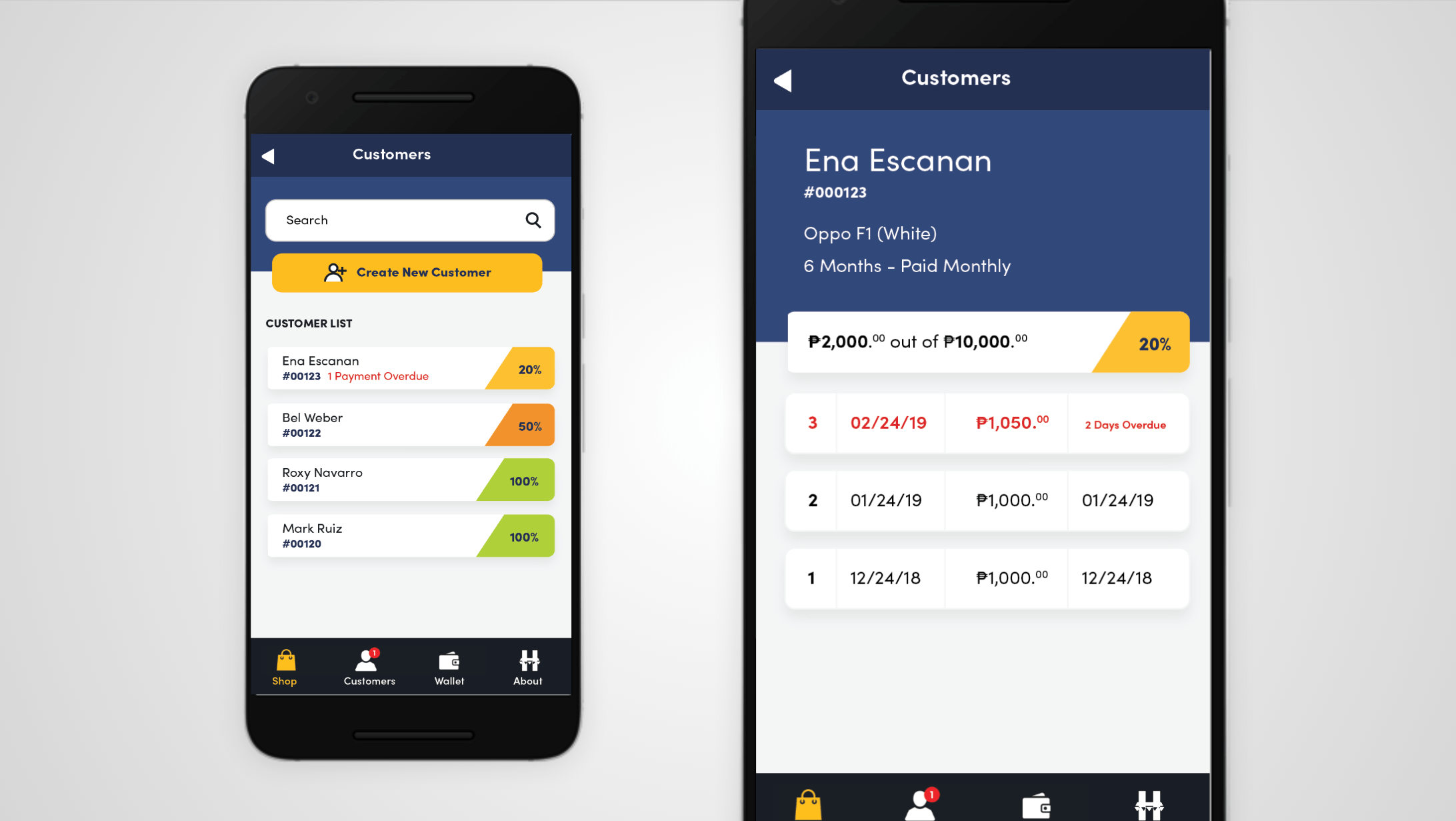
Our journey began when we packed our bags and journeyed to a far-away land called Quezon City. It was Bel’s first time in the North, in contrast to Ena having spent years there. Although we weren’t quite sure of what to expect, we were both really excited. After riding through the usual Katipunan traffic and into Varsity Hills, we arrived at a bright orange house with a big banner up front that read in large, rainbow letters; “HAPIHOUSE: HOME OF HAPINOY.” From there, we knew we were in for some high, high energy. We entered the Hapihouse and met with Mark Ruiz, founder of Hapinoy, and his cheerful team.

Hapinoy is a social enterprise founded by Bam Aquino and Mark Ruiz that partners with microentrepreneurs—particularly sari-sari store owners—through education, linkages to capital, new business opportunities, and technology enablement. They currently have 14,000 store partners and their main goal is to make sure these titas are future-proof—equipped with technology and training that will help them earn alongside other local businesses.
Hapinoy developed a mobile app called Bizmo to enable these sari-sari store owners to offer mobile-based services such as loading, Smart Padala, and bills payment. Also included in this app is a feature called HapiShop, which enables sari-sari stores to sell gadgets and appliances to their neighbors without holding inventory in their stores. Although very valuable, Mark shared with us that their main pain point for this service is low adoption rate—only 1% of their partner stores actively uses HapiShop. We set out to meet the titas to ask their personal experience with HapiShop.


On our first immersion day we made our way to Langka street, a busy neighborhood consisting of a school, residential housing, a car repair shop, and of course, a couple of sari-sari stores. In one of them, we met our firsttita, Tita Sandra. She is tagged as an active user as she had already incorporated Bizmo into her business services. We talked to her and learned about her daily life, the inner workings of her sari-sari store, and her experiences with selling appliances and gadgets through through the app. She told us about how people had really taken to the service at the beginning, with 2–3 items sold within just the first week!

Although she has had some success with HapiShop, she also talked about her hardships and how customers had difficulties with the requirements, slow processing, and inconsistencies with tracking down payments and penalties. She told us horror stories of her house being broken into and customers running off without completing their installments. Despite the disheartenment in both her and her customers, she showed true grit and real initiative in the way she made trackers out of index cards just to make it all work.

We then proceeded to our next store owner, Tita Imelda. She told us about how their sari-sari store is their main source of income and, although there are several more in the area, their neighborhood works together to sell different goods so as to avoid conflict of interest. She’s tagged as inactive but has actually tried selling a few times and almost sold five cell phones. Her almost customers said there are too many requirements and the process looked too complex for them. They would rather borrow money from a friend or family member then buy the item at the mall. This way they can see the item on-hand and get it fast. Tita Imelda decided to not pursue selling through HapiShop as she has other modes of income.

After hearing the stories from the titas, we asked Mark if we could see and learn firsthand how partner titas get recruited, how they first learn about the service, and what their initial reactions and questions are. Luckily, they had an ongoing field operation in another part of Quezon City that we could tag along. On our third day, we went around Project 4 with Kuya Joven and his team.
Armed with brown envelopes of recruitment materials and Google Maps, we went around street by street looking for all sari-sari stores in the area. The process was quick because each recruiter has a quota of eight sign-ups per day. We were able to go to around 20 stores in two hours and got six sign-ups. The way they do it is to ask the sari-sari store owner if they already offer GCash services. If they say no, Kuya Joven will offer them a free GCash application that comes with a store front poster. Once done, that’s when they offer an application for Bizmo service. Kuya Joven even demos the app through his phone, showing the list of products the owner can sell.

One thing is for sure: titas want to sell through HapiShop but the main barrier to the service is that their customers think the process is too complex;they also have doubts that they will actually get the items they want. This doubt causes them to consider and choose other alternatives like Home Credit or buying straight from SaveMore.
We want to prioritize value and organize information that focuses on long term value for bothtita and customers.
Through our analysis of the service and thetita journey (a user journey diagram of the titas), we realized that this customer thinking is reflective of how the titas get their information about the service. There is no one source of information about HapiShop, its process, and its value. Without full and clear knowledge of the service, it’s harder for the titas to transfer the value to the customers.
The objective of our design proposal is to strengthen the sari-sari store experience. We want to prioritize value and organize information that focuses on long term value for bothtita and customers. We also want to build credibility by equipping everyone with confidence and knowledge, and making sure all the materials are cohesive with the brand. We did a lot! Our proposal is composed of four things, one for each person involved in this service whom we had the pleasure of meeting and hearing their stories.


Proposed HapiShop logo

Inspired by the tarp roofs over the sari-sari stores. We added banderitas to relate to the Hapinoy brand.
HapiShop brand refresh
The goal of this refresh is to visually connect it more to the Hapinoy brand with added element of credibility. We envision this to be more fun and welcoming to the community!

Infographic (at the back of recruitment brown envelope) and HapiPartner pin
Recruitment kit
This will serve as a guide for the recruiter in explaining what HapiShop is to titas and the value it could have to their business. The pin is a cost-effective way to create a uniform!

The info guide includes basic information about the service, process checklist, things to avoid, and Tita Tips. This new section can be accessed even without an account.

Customer list and payment tracker with scheduling and notification feature
HapiShop mobile app redesign
We applied the brand refresh to their main platform! We wanted to make it look more like an e-shop and add new features like an info guide and improved payment tracker.

HapiShop banderitas and front store sign

HapiShop booklet can be shared by the titas to their potential customers

HapiShop booklet focuses on what the customer can get from this service

A complete view of the process as well as tips for possible scenarios

Resibo pad and wallet size payment tracker
Tita Kit
Last but not least, we created a kit for our titas. Highly grounded in their stories and their customers’ pain points.
Through this experience, we got a glimpse into the lives of the sari-sari store titas and helped find ways to bridge them to their customers and to the services that Hapinoy offers using design! We are thankful to witness how hard they work and how much they do, not just for their families, but for the community as a whole.
—Creative Connect is a design exchange where Works of Heart designers collaborate with nonprofits and social enterprises in Asia, with the aim of using design for social impact. Read more about it here.
If you’re an Asian nonprofit, social enterprise, or an impact-driven organization and are interested in joining this program, send us a message at cc@worksofheartph.com.
